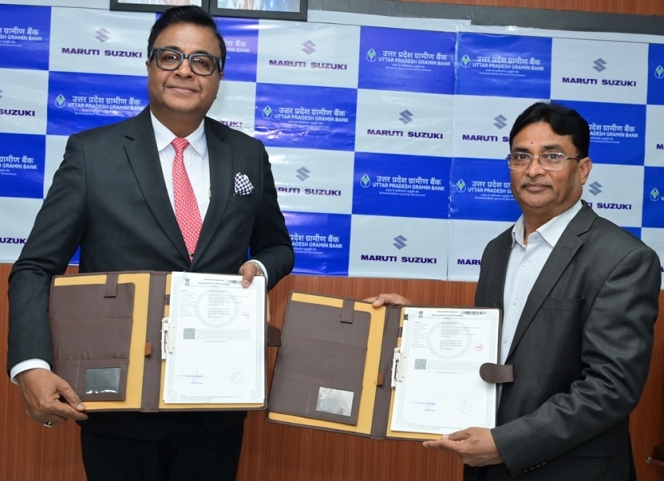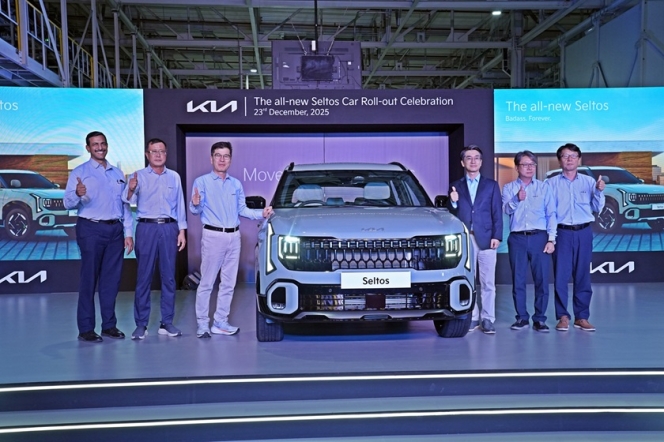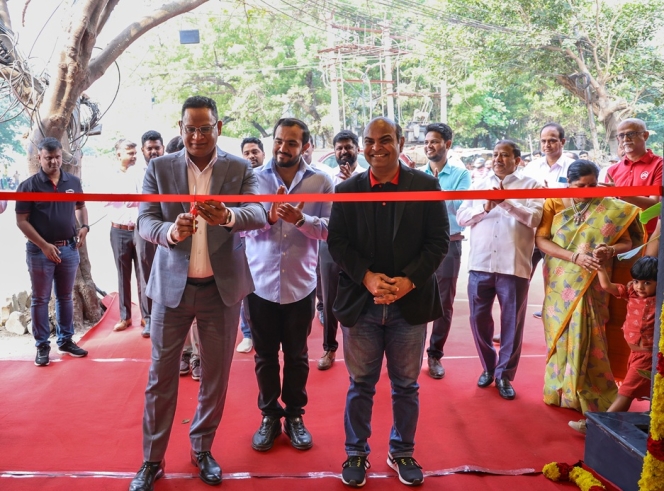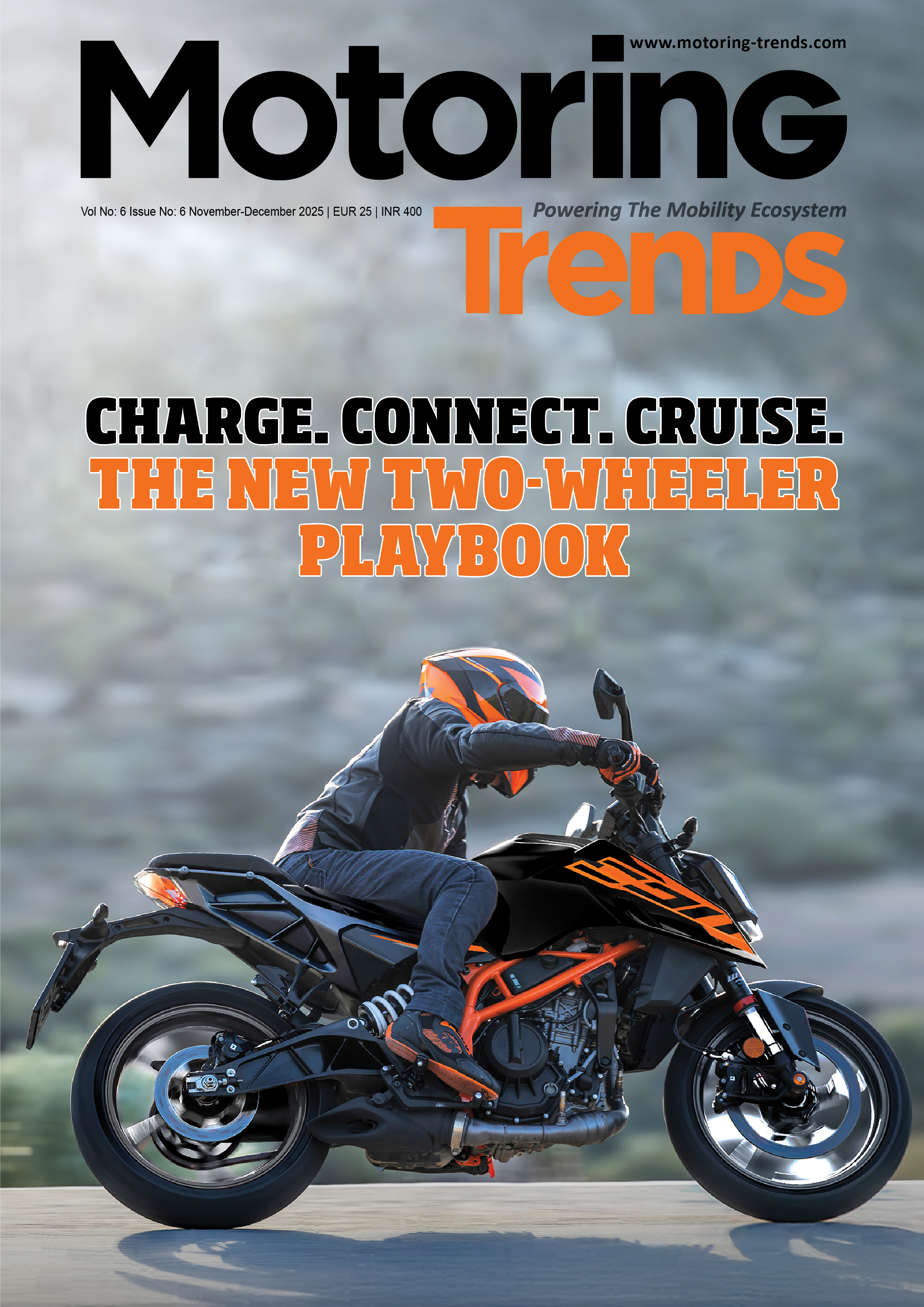- Regrip
- tyre recycling
- tyre life
- Suneil Shetty
- Bollywood
- Govt of Rajasthan
- Ministry of Electronics and Information Technology
- MeitY
- IIMA Ventures
- Sirious One
- Inflection Point Ventures
- Let's Venture
- EaseMyTrip
- Rikant Pitti
- Shobitam
- Aparna Thyagarajan
- Bombay Chemical & Rubber Product
- Vishal Jhunjhunwala
- TIE Angels
- Mahavir Pratap Sharma
- Tushar Suhalka
A King Waiting In The Wings?
- By Arup Das
- June 22, 2021

Skoda Auto India took the wraps off the much-awaited Kushaq and made its global debut after showcasing its concept version, Vision IN at the 2020 Auto Expo. After a series of teasers, we finally got to see, touch and sit inside the production version of this all-new SUV. The Kushaq has many firsts going for itself like it is Volkswagen Group’s first locally manufactured SUV in India and it is also the first vehicle to be rolled out under Volkswagen Group’s India 2.0 Project. There’s further good news for SUV fans as Skoda will start accepting booking orders for the Kushaq from June with the first batch to be delivered in July.
 The German manufacturer also squashed rumours of it planning to exit the Indian market by emphasising that the group is investing one billion euros to strengthen its presence in the Indian subcontinent and aim to achieve a combined market share of five percent by 2025. Thomas Schäfer, Skoda Auto CEO, further confirmed this by saying, “With the world premiere of the Skoda Kushaq, we are launching our model campaign on the Indian market and are fulfilling the mandate Volkswagen Group tasked us with roughly two and a half years ago when we were asked to assume responsibility for the Indian market. I would like to thank Gurpratap Boparai, Managing Director of Skoda Auto Volkswagen India Private Limited and his team for what they have achieved so far. We are now focusing on a smooth market launch and the successful start of our new model while setting the course for the next steps on the Indian subcontinent. I am convinced of the country’s great growth potential. And we will make the most of it for Skoda and Volkswagen.”
The German manufacturer also squashed rumours of it planning to exit the Indian market by emphasising that the group is investing one billion euros to strengthen its presence in the Indian subcontinent and aim to achieve a combined market share of five percent by 2025. Thomas Schäfer, Skoda Auto CEO, further confirmed this by saying, “With the world premiere of the Skoda Kushaq, we are launching our model campaign on the Indian market and are fulfilling the mandate Volkswagen Group tasked us with roughly two and a half years ago when we were asked to assume responsibility for the Indian market. I would like to thank Gurpratap Boparai, Managing Director of Skoda Auto Volkswagen India Private Limited and his team for what they have achieved so far. We are now focusing on a smooth market launch and the successful start of our new model while setting the course for the next steps on the Indian subcontinent. I am convinced of the country’s great growth potential. And we will make the most of it for Skoda and Volkswagen.”
Volkswagen Group’s India Project 2.0 focus is on manufacturing vehicles tailor-made for India, but more importantly, giving utmost importance to high-level localisation of parts and sharing key components with other vehicles in the group. The testimony to this is the Kushaq that’s managed to achieve 95 percent localisation level. The other thing the VW Group paid a lot of attention to was creating a platform for India and which fulfils the diverse demands of our market as well as meet the latest, stricter safety and emission requirements.
While targeting high-volume segments, the VW Group has built a new India-spec modular MQB platform, the MQB-A0-IN, based on which two SUVs including the Kushaq and two notchbacks will be launched under both the Skoda and Volkswagen brand. Again, in order to achieve a high level of localisation in India, Skoda has set up a new MQB production line at its Chakan plant near Pune.
One might ask, what’s in a name, but in Skoda’s case, it means quite a lot as it continues to follow its K & Q nomenclature. The name of the new SUV is derived from the Sanskrit word ‘Kushak’, which means king or emperor.
Exterior design: The production version of the Kushaq has managed to retain quite a few of its design elements from its concept model. It showcases the typically solid and muscular design language of the Volkswagen family. The big butterfly shaped front grille with vertical slats in chrome finish and split L-shaped LED headlights with crystalline structures make the Kushaq stand out in the crowd. It sports quite a robust road presence thanks to the large air vents below the headlamps, the front bumper with a mesh finish and, of course, the skid plates in the front and rear. If that wasn’t enough to make a statement, the clean prominent lines on the bonnet and running across the shoulder line in the side and multiple creases in the rear give the Kushaq a no-nonsense image. The SUV will be available in three variants – Active, Ambition and Style – with the entry-level sporting 16-inch steel wheels while the mid-range gets 16-inch alloy wheels and top-of-the-range Style will boast two-tone 17-inch ones.
In terms of specifications, the Kushaq is 4,221 mm long, 1,760 mm wide and has a height of 1,612 mm with a ground clearance of 188 mm. Its wheelbase, on the other hand, is 2,651 mm in length, making it longer than mid-size SUV segment leader Hyundai Creta and the popular Kia Seltos. This ensures a spacious cabin for five passengers along with 385 litres of boot space.
 Interiors: The Kushaq gets a multi-layered dashboard with black plastic on top then a metal band and finally a brown and a black layer. The centre of attraction is the 10-inch touchscreen and the mid and top variant comes with a touch control panel for climate control. The infotainment system gets internal memory storage, wireless Smartlink, both Android Auto and Apple CarPlay and My Skoda in-car connectivity app.
Interiors: The Kushaq gets a multi-layered dashboard with black plastic on top then a metal band and finally a brown and a black layer. The centre of attraction is the 10-inch touchscreen and the mid and top variant comes with a touch control panel for climate control. The infotainment system gets internal memory storage, wireless Smartlink, both Android Auto and Apple CarPlay and My Skoda in-car connectivity app.
The Style trim is also equipped with some clever yet practical features like ventilated leather front seats, keyless entry, an electric sliding glass roof and an auto-dimming rear-view mirror.
Skoda has given a lot of importance to practicality; as a result, the Kushaq comes with numerous storage compartments in the cabin like a glove box, centre console, additional cubby holes to store bottles and other knick-knacks.
The Kushaq gets a brand new two-spoke steering wheel and the automatic versions come with paddle shifters. It also comes with chrome finish scroll controls and buttons for audio, phone and cruise control. What was a bit of a surprise was that it came with an analogue instrument cluster and not a digital one like its cousin, the Volkswagen Taigun.
All this sounds great, but how comfortable is the cabin? Well, with big supportive seats and decent under-thigh support, both the front and the rear passengers will feel pampered. A big bonus is that passengers over six feet in height will enjoy plenty of knee and legroom.
Engine: Unlike most of its competition in the mid-size SUV segment, the Kushaq will not offer a diesel engine option. It will be available in two engine options – 1-litre three-cylinder petrol with an output of 108 bhp mated to either a 6-speed manual or a 6-speed torque converter automatic gearbox like the Skoda Rapid. The 1.5-litre turbocharged petrol, on the other hand, churns out 145 bhp and will be available in either a 6-speed manual or a 7-speed dual-clutch automatic transmission.
Safety: The Kushaq comes fully loaded with safety features like electronic stability control, multi-collision brakes, six airbags including front side airbags, Hill-hold control, ISOFIX child seats and the list goes on. (MT)
Citroen India Delivers 51 C3 CNG Vehicles To Luthra Group
- By MT Bureau
- December 24, 2025
Citroen India, in partnership with its dealership La Maison Nanavati, has completed the handover of 51 Citroen C3 CNG vehicles to the Luthra Group. The ceremony took place at the Luthra Group’s headquarters in Surat.
The delivery is part of Citroen's strategy to expand its presence in tier-II and tier-III markets by providing mobility solutions to businesses and individuals.
The Citroen C3 CNG is designed for high-usage environments and daily commutes. The model includes several features tailored for the Indian market, integration of a factory-fitted CNG kit to manage running costs. A suspension system tuned specifically for local road conditions. Provisions for cabin space and air-conditioning systems designed for high-ambient temperatures.
The handover to Luthra Group represents the brand's focus on cost-efficient transportation. By targeting the regional business sector, Citroen India aims to strengthen its footprint in Gujarat and the broader Indian mobility market.
The C3 CNG is positioned as a solution for users requiring reliability and low operating expenses without compromising on ride comfort.
Maruti Suzuki India Partners Uttar Pradesh Gramin Bank For Retail Financing
- By MT Bureau
- December 24, 2025

Maruti Suzuki India has signed a Memorandum of Understanding (MoU) with Uttar Pradesh Gramin Bank, a regional rural bank, for vehicle retail financing partnership on new cars, pre-owned vehicles and commercial vehicles.
This collaboration marks the 50th retail finance partner for Maruti Suzuki India. The partnership is intended to use the bank’s network to provide credit options to a range of customer profiles, particularly in rural and semi-urban regions.
The partnership aims to increase the accessibility of Maruti Suzuki products through, tailored finance schemes designed for rural and regional customers.
Partho Banerjee, Senior Executive Officer, Marketing & Sales, Maruti Suzuki India, said, “Our partnership with Uttar Pradesh Gramin Bank marks a significant milestone as we onboard our 50th retail finance partner. This reinforces our commitment to making car ownership simpler and more affordable for customers across India. By expanding our reach through this strategic alliance, we aim to empower buyers with competitive, customer-friendly financing solutions that enhance the overall purchase experience. We remain focused on delivering seamless, tailored finance options, and this collaboration strengthens our vision of providing the Joy of Mobility to aspiring Indian consumers.”
Yadav S. Thakur, Chairman, Uttar Pradesh Gramin Bank, said, “At Uttar Pradesh Gramin Bank, empowering customer aspirations is at the heart of everything we do. Our partnership with Maruti Suzuki, a leader in the automotive industry, is a strategic step towards enhancing our service offerings and delivering greater value to our customers. This collaboration aligns with our 'Customer-First' mission, enabling us to provide accessible and affordable vehicle financing solutions. We look forward to helping more individuals and families across the country realise their dream of owning a Maruti Suzuki vehicle.”
Kia India Commences Production Of New Seltos In Anantapur
- By MT Bureau
- December 23, 2025

Kia India has started production of the latest generation Seltos at its manufacturing facility in Anantapur. The company has confirmed that prices for the mid-SUV will be announced on 2 January 2026.
The Anantapur plant, established in 2019, serves as a hub for both the Indian domestic market and international exports. The facility uses automation and a local workforce to manufacture the Seltos, which was the first model produced by the company in India.
The new model is built on Kia’s K3 platform, which has been engineered to increase structural rigidity and improve suspension damping. The vehicle has grown in size compared to its predecessor to increase cabin space and stability. It has 4,460 mm of length, 1,830 mm of width and a wheelbase of 2,690 mm.
The exterior design follows the ‘Opposites United’ philosophy, featuring a ‘Digital Tiger Face,’ LED projection headlamps, and alloy wheels with neon brake callipers.
The vehicle integrates several digital interfaces and driver assistance systems. It features an upgraded Kia Connect 2.0 suite with over-the-air (OTA) software updates and a proximity unlock function.
In terms of safety, it gets 24 features as standard, while ADAS Level 2 offers 21 autonomous features to assist the driver. The Kia Seltos SUV comes with three engine options – 1.5-litre Petrol producing 115 PS of power and 144 Nm of torque, 1.5 T-GDI Petrol producing 160 PS of power and 253 Nm of torque and a 1.5-litre diesel engine producing 116 PS of power and 250 Nm of torque.
Transmission choices include a 6-speed manual (6MT), intelligent manual (6iMT), IVT, 7-speed dual-clutch (7DCT) and a 6-speed automatic (6AT). The model will be sold in four trims – HTE, HTK, HTX and GTX – with additional option variants and an X-Line styling pack.
Gwanggu Lee, Managing Director & CEO, Kia India, said, “The roll-out of the All-New Kia Seltos marks a proud milestone for Kia India. Seltos has long set benchmarks in the mid-SUV segment, and this new generation represents a bigger, bolder, and more progressive evolution shaped by insights from Indian customers. With production now underway at our Anantapur facility, our teams are fully geared to ensure customers can take delivery of their all-new Seltos without long waiting periods. We are confident the all-new Seltos will once again redefine expectations in the segment and strengthen Kia’s leadership in India."
“The new Seltos looks fantastic. The Anantapur team, together with our supplier partners, have done an outstanding job in delivering our customers a great looking, significantly bigger, technologically progressive and safe vehicle with impressive functionality and connectivity,” he said.
- Citroen India
- Jeep
- Stellantis
- Citroen 2.0
- Shailesh Hazela
- Kumar Priyesh
- Sree Venkata Teja Kethineni
- VTK Automobiles
Citroen India Opens 126th Outlet In Chennai Under Citroen 2.0 Strategy
- By MT Bureau
- December 23, 2025

Stellantis-owned French automotive brand Citroen India has inaugurated its 126th point of sales and service (POS&S) facility in Chennai, continuing the expansion of its network under the ‘Citroen 2.0 – Shift Into The New’ strategy.
The new 3S (Sales, Service and Spares) facility is located at Chitlapakkam, near Chrompet. It is an extension of the partnership with VTK Automobiles, which now operates five Citroen touchpoints in the city. The outlet functions as a ‘Stellantis Brand House,’ allowing customers to access both Citroen and Jeep brands within a single space.
Since the announcement of the Citroen 2.0 strategy, the brand has increased its network by 48.6 percent. Over the last six months, the company added 43 points of sale through its network expansion programmes. Citroen expects to reach a total of 135 outlets by the end of the year, with further operations planned for the north, west, and east of India.
The strategy focuses on several pillars – deepening the domestic supply chain for India-centric products. Expanding the dealer footprint into Tier 2 and Tier 3 locations. Using digital tools and unified spaces for sales and aftersales services.
Shailesh Hazela, CEO and Managing Director, Stellantis India, said, “The expansion of Stellantis network further with VTK dealership in Chennai marks another important step in Citroen and Jeep India’s network growth strategy. Chennai is a key market for us, and this upgraded facility will enable us to serve our customers better with a seamless sales and ownership experience. Aligned with our Citroen 2.0 strategy, we remain committed to strengthening our dealer partnerships and building a robust, customer-centric network across the country.”
Kumar Priyesh, Director Automotive Brands, Stellantis India, said, “We have grown our network by almost 48.6 percent since we announced the Citroen 2.0 strategy and have been able to expand our operations in different parts of country: adding tier 2/3 locations while further strengthening in Metro/ Tier 1 cities. Through project Visitar, Network Expansion Program and expansion in new geographies we added over 43 POS in the last 6 months and are already in advanced stages to start additional operations in North, West and Eastern parts of the country and expected to close the year with 135 POS for Citroen.”
Sree Venkata Teja Kethineni, Dealer Principal, VTK Automobiles, said, “We’re happy to partner to this pivotal shift in automotive retail, proudly representing Jeep and Citroen. Our dual-brand strategy empowers us to deliver a truly elevated and distinctive experience – whether customers seek rugged performance or refined sophistication. With passion, professionalism and personalised care at the core, our team is committed to exceeding expectations and upholding the global standards these iconic brands represent.”
The facility includes a service centre equipped with diagnostics and digital tools. Staff members are trained across both Jeep and Citroen product lines to provide technical support and product information.






Comments (0)
ADD COMMENT